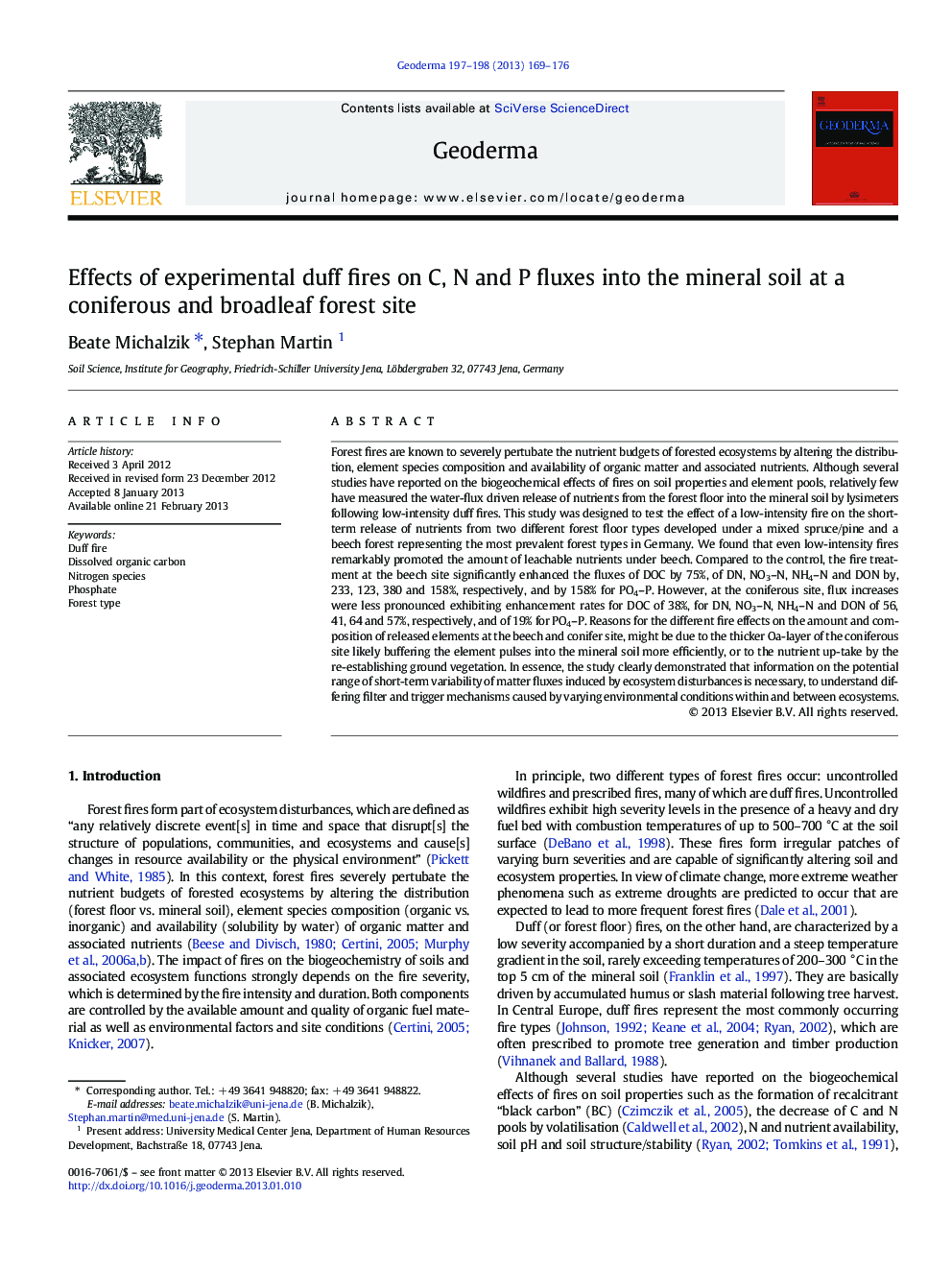| Article ID | Journal | Published Year | Pages | File Type |
|---|---|---|---|---|
| 4573737 | Geoderma | 2013 | 8 Pages |
Forest fires are known to severely pertubate the nutrient budgets of forested ecosystems by altering the distribution, element species composition and availability of organic matter and associated nutrients. Although several studies have reported on the biogeochemical effects of fires on soil properties and element pools, relatively few have measured the water-flux driven release of nutrients from the forest floor into the mineral soil by lysimeters following low-intensity duff fires. This study was designed to test the effect of a low-intensity fire on the short-term release of nutrients from two different forest floor types developed under a mixed spruce/pine and a beech forest representing the most prevalent forest types in Germany. We found that even low-intensity fires remarkably promoted the amount of leachable nutrients under beech. Compared to the control, the fire treatment at the beech site significantly enhanced the fluxes of DOC by 75%, of DN, NO3–N, NH4–N and DON by, 233, 123, 380 and 158%, respectively, and by 158% for PO4–P. However, at the coniferous site, flux increases were less pronounced exhibiting enhancement rates for DOC of 38%, for DN, NO3–N, NH4–N and DON of 56, 41, 64 and 57%, respectively, and of 19% for PO4–P. Reasons for the different fire effects on the amount and composition of released elements at the beech and conifer site, might be due to the thicker Oa-layer of the coniferous site likely buffering the element pulses into the mineral soil more efficiently, or to the nutrient up-take by the re-establishing ground vegetation. In essence, the study clearly demonstrated that information on the potential range of short-term variability of matter fluxes induced by ecosystem disturbances is necessary, to understand differing filter and trigger mechanisms caused by varying environmental conditions within and between ecosystems.
► Even low-intensity fires remarkably promote the amount of leachable nutrients into the mineral soil. ► Duff fires induce spatial and temporal “hotspots” of DOC, DN, NH4–N, NO3–N, DON and PO4–P fluxes. ► The shaping of hotspots depends on the fuel-bed and its site-specific properties.
